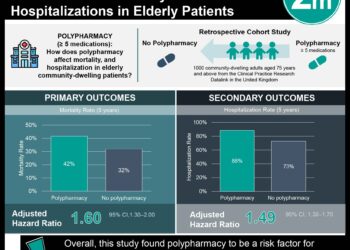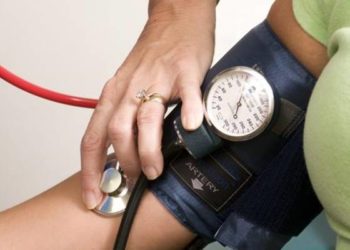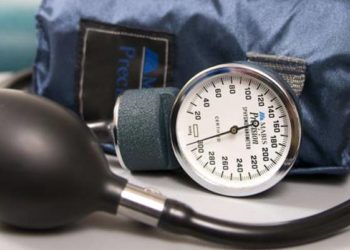Higher 24-hour and nighttime blood pressure readings associated with increased risk of death and poor cardiovascular outcomes
1. In this prospective cohort study, higher 24-hour and nighttime blood pressure measurements were significantly associated with greater risks of death and a composite cardiovascular (CV) outcome.
2. 24-hour and nighttime blood pressure may be considered optimal measurements for estimating CV risk however, there was only a very modest improvement in prediction of risk when added to standard blood pressure indexes taken in ambulatory settings.
Evidence Rating Level: 2 (Good)
Study Rundown: Ambulatory blood pressure (BP) readings are recommended by most national guidelines for hypertension assessments. However, recent studies suggest that nighttime measurements may be more predictive of poor outcomes in hypertension, and it is unclear if BP readings at night or over 24 hours are similar in terms of assessing risk. In this prospective cohort study, higher 24-hour and nighttime blood pressure measurements were significantly associated with greater risks of death and a composite cardiovascular (CV) outcome, even after adjusting for other office-based or ambulatory blood pressure measurements. 24-hour and nighttime blood pressure were found to be optimal measurements for estimating CV risk, however, there was only a very modest improvement in prediction of risk when added to standard blood pressure indexes.
Though this study suggests small improvements in hypertension risk assessment with nighttime and 24-hour BP index, it has some limitations. Antihypertensive drug treatment was only recorded at baseline and could therefore not be adjusted for as a time-dependent covariable. There also might be misclassification bias in the assessment of the CV study end points.
Click to read the study in JAMA
Relevant Reading: Night-time home versus ambulatory blood pressure in determining target organ damage.
In-Depth [prospective cohort]: 11,135 adults were recruited across many countries with a median follow-up of 13.8 years. The primary end points were total mortality and a composite CV event consisting of CV mortality combined with nonfatal coronary events, heart failure, and stroke. Secondary end points included CV mortality and a variety of other coronary events. Both primary end points were significantly associated with all single systolic BP indexes (p < .001). For nighttime systolic BP level, the hazard ratio (HR) for total mortality was 1.23 (CI95 1.17 to 1.28) and 1.36 for CV events (CI95 1.30 to 1.43). For the 24-hour systolic BP level, the HR for total mortality was 1.22 (CI95 1.16 to 1.28) and 1.45 for CV events (CI95 1.37 to 1.54). With adjustment for any of the other systolic BP indexes, the associations of nighttime and 24-hour systolic BP with the primary outcomes remained statistically significant (HRs ranging from 1.17; CI95 1.10 to 1.25; to 1.87; CI95 1.62 to 2.16). In models including both 24-hour and nighttime BP measures, secondary outcomes were significantly associated with nighttime BP. HRs for systolic and diastolic 24-hour BP was 1.36 (CI95 1.14 to 1.63) and 1.24 (CI95 1.06 to 1.44), respectively.
Image: PD
©2019 2 Minute Medicine, Inc. All rights reserved. No works may be reproduced without expressed written consent from 2 Minute Medicine, Inc. Inquire about licensing here. No article should be construed as medical advice and is not intended as such by the authors or by 2 Minute Medicine, Inc.







